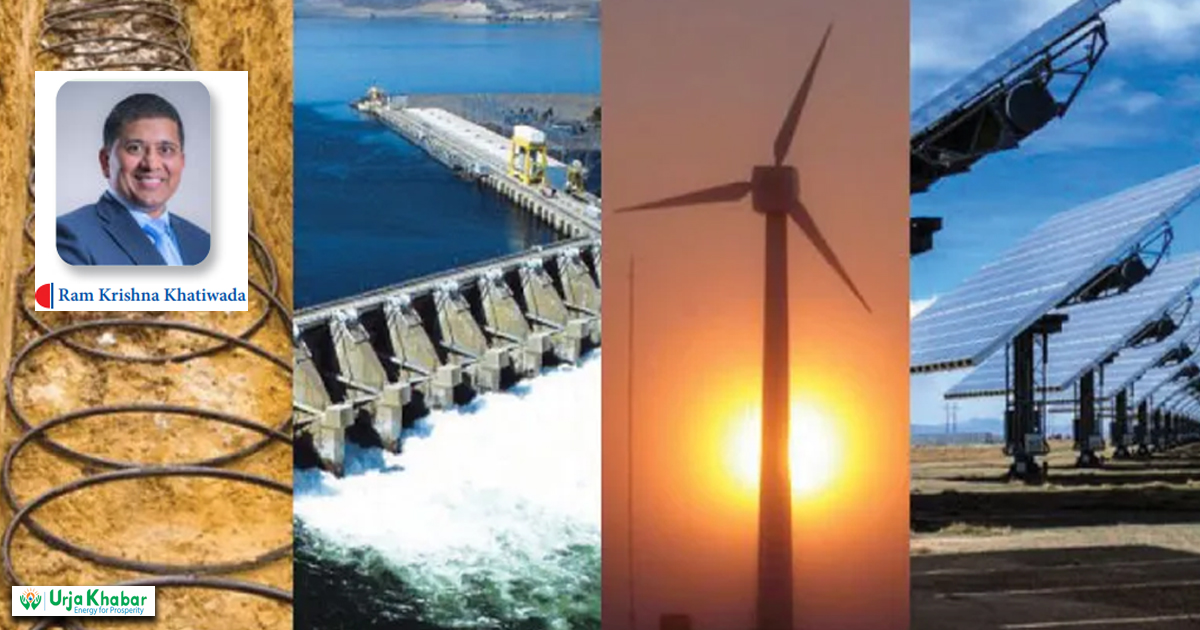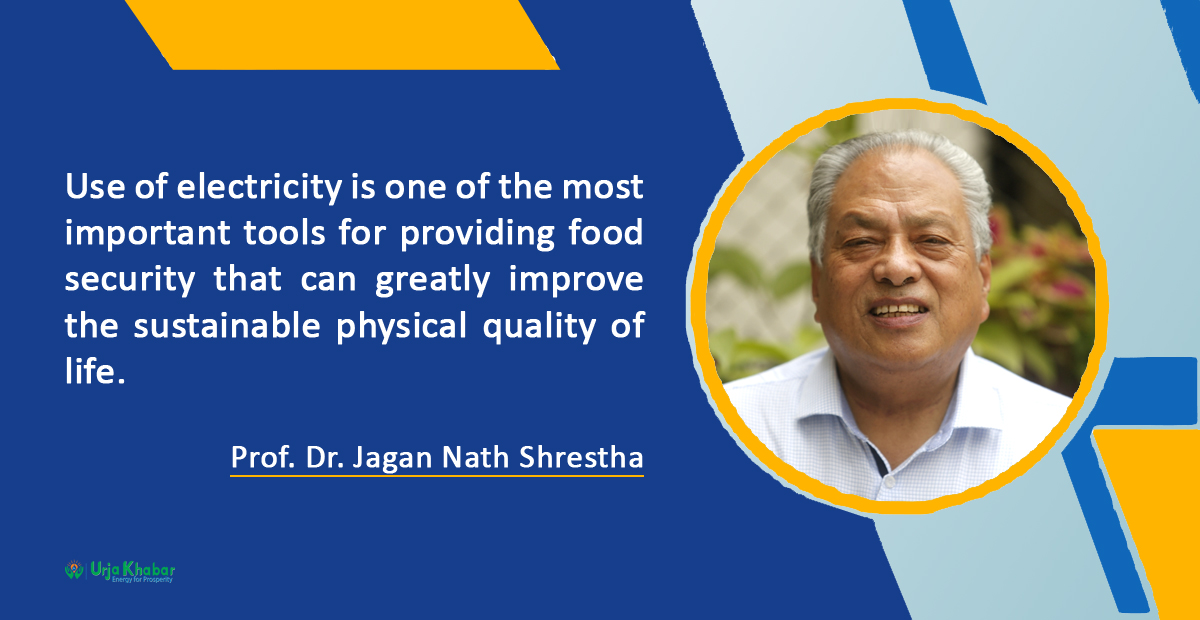Energy Update
Dam Safety Management Framework for Mountainous Regions
Lessons Nepal Can Learn from Global Best Practices
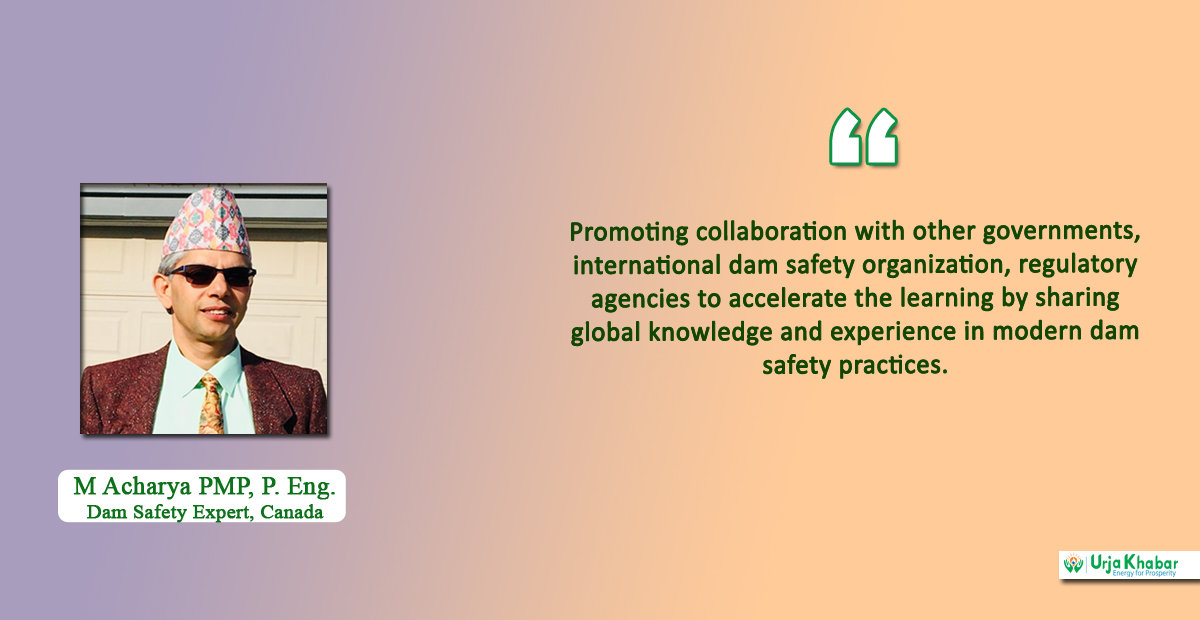
ABSTRACT: In many mountainous countries such as Nepal, Bhutan, India, China, Indonesia, Malaysia, Pakistan, and parts of Latin America, dams are exposed to a broad spectrum of natural hazards. Today, increasingly larger dams are being constructed globally to meet growing energy demand, irrigation, recreation, and freshwater needs and to facilitate economic growth. In Nepal, the plan to achieve economic prosperity through hydropower expansion is driving a new era of dam construction. Nepalese dams, similar to many other mountainous countries, are exposed to a broad spectrum of natural hazards. These natural hazards, coupled with the impacts of climate change, continued population growth, and increased development downstream of dams result in increased dam safety risks to the public environment, and cultural heritage. A structured dam safety management program is used in many jurisdictions around the world to help reduce the likelihood of failure and its potential consequences.
While efforts by the Government of Nepal and other organizations are being made to improve dam safety, the nation currently has a relatively weak dam safety management program with no national dam safety regulation nor mandated requirements for the effective implementation of consistent dam safety good practice. In this paper, the evolution of global dam safety management practice is discussed, emphasizing the need for robust dam safety programs and appropriate regulations to improve public safety. It explores how the safety of the world dams is managed with an emphasis on areas where the specific needs of dams located in mountainous regions are not always well addressed. The paper makes an argument as to why effective dam safety management program becomes even more relevant in mountainous countries such as Nepal and how dam safety management can help Nepal to develop resilient hydropower to achieve the nation’s goals.

Keywords: Hydropower, hydro-diplomacy, Dam Safety, Natural Hazards, Dam Incidents, Residual Risks; Emergency Management; Public Safety
1. INTRODUCTION

Originated mostly from the heart of the Himalayan region, water is one of Nepal’s most valuable natural resources, which must be utilized for self-sufficiency in food and water supply, energy, flood control and recreation. As illustrated in the graph below, with the development of large dams and reservoirs, Nepal’s vast water resources can be utilized as nation’s powerful economic engine. However, while dams and reservoirs provide considerable economic and societal benefits, a dam failure can pose significant risks to the downstream population, the environment, and the nation’s cultural heritage if they are not developed safely.
Graph 1: Graphical illustration of the world’s large dams and GDP over time
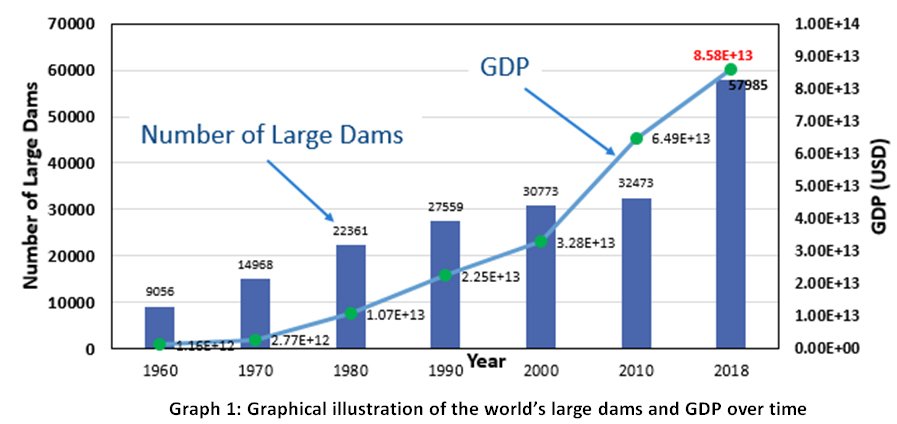
Although the actual lifespan of well designed, constructed and maintained dams can be almost indefinite if an owner implements an effective dam safety management program (Donnelly, 2015) dams can, and do, still fail at a somewhat consistent rate of about 10-4 dam failures per year according to information reported by Acharya (2021) and others. In response to the lessons learned from dam failures, modern national dam safety management programs have evolved that are implemented throughout a project’s life cycle. This proven approach has become a well-accepted method to help minimize both the likelihood and consequences resulting from dam safety incidents. However, none of the globally available guidelines adequately address hazards unique to mountainous regions such as Nepal. For this reason, Nepal needs to develop guidelines specifically tailored to these unique natural hazard to address the safety requirements presented to dams in this geologically young and tectonically active region.
In this paper, some thoughts, and recommendations on how Nepal and Nepalese dam professional can work to develop their capacity to guide the nation’s dam safety practices towards the right direction are discussed.
2. NATURAL HAZARDS OF NEPAL AND INCREASED DAM SAFETY RISKS
2.1 Dams in Nepal and Related Risks
As is illustrated in Figure 1, there are a significant number of existing dams and dams that have been or are planned to be constructed as part of Nepal’s growing hydropower industry. All of these dams are located in a seismically active region of the world where natural hazards represent a real risk. For example, heavy rainfall during monsoon, compounded by cloudbursts, can also lead to landslides, mudslides, and debris flows, all of which present significant dam safety hazards over and above the seismic hazard itself. The effects of climate change can compound these hazards.
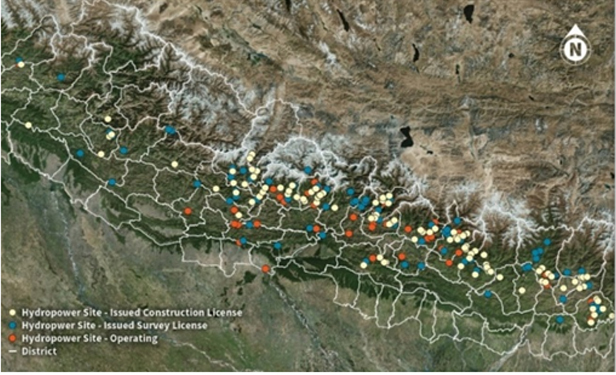 Figure 1a: Existing and planned hydropower power plants in Nepal
Figure 1a: Existing and planned hydropower power plants in Nepal
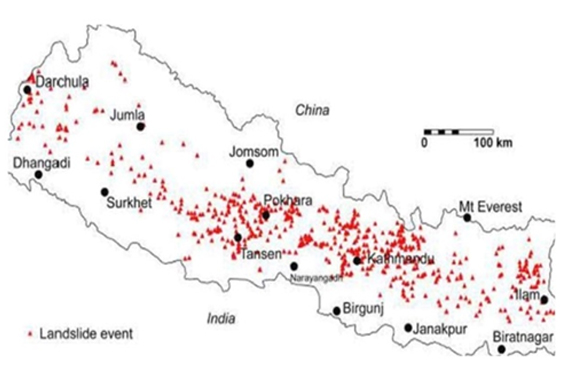
Figure 1.b: Historic Landslide Events showing increased geohazard risks to dams (data from the GoN)
Unfortunately, formal dam safety management programs designed to address the full range of potential risks that these existing and new dams may pose do not yet exist which results in inconsistent dam safety design and management practices. In addition, Nepal’s ability to efficiently deal with the impacts of these hazards is reduced because many dam sites are remote with poor access and, in many river valleys, little opportunity to attenuate flows making downstream populations and infrastructure considerably more vulnerable.
2.2 Climate Change Impacts on Dam Safety Risks in Nepal
Located in the heart of Himalayas, Nepal Ranks one of the most vulnerable countries around the world to the effect of climate change (Basnyat et. al., 2020). Climate change science indi-cates that there is a strong likelihood of an increasing occurrence of severe events in the next century (Ouranous 2015).
Some climate change risks to dams and hydropower projects include changes to the hydrologic cycle potentially altering the inflow design flood and design loads, change to function conditions due to melting permafrost, perhaps different operation and maintenance needs, impacts to power production due to uncertain hydrological input, In addition, the impact the global climate change may have on dams are not yet well understand. As much, a means to estimate these impacts represents one of the most important questions facing dam industry and utility owners (Dick et. al. 2019).
While, currently, the impacts of climate change remain uncertain, the available evidence indi-cates that the rate of global warming is higher in the Himalayan Range and can be expected to result in more frequent extreme climatological events leading to more frequent and severe geohazards. In this regard, Bhatta (2017) projected that the economic costs of climate change including hydropower, agriculture and water-induced disasters could be 2–3% of current GDP/year by mid-century. The potential for changing climate variables represents a significant dam safety hazard in countries such as Nepal due to more pronounced seasonal precipitation imbalances and rising temperature in the Himalayas. This has resulted in thawing permafrost, destabilizing mountain slopes and glacial retreat. This has increased the potential for landslides, debris flows, Landslide Dam Outburst Floods (LDOFs) and Glacial Lake Outburst Floods (GLOF’s). 2021 Glacier outburst in Uttarakhand, India and 2022 massive collapse of glacier in Dolomite Mountain in Italy are some recent example mountain issues that are not adequately addressed in global dam safety practice.
Recently, Nepal’s Climate Change Policy promoted the development of more clean energy to reduce greenhouse gas emissions, and to build climate resilient infrastructure that can adapt to climate change impacts in Nepal. These policies encourage the development of hydropower projects to help meet the region’s energy demand (Bhatta 2017). To meet this goal, the impacts of natural hazards, climate change, and the associated risks needs to be one of the considerations accounted for in the design, construction and operation and maintenance of hydropower projects in Nepal. As reported by Donnelly, 2019, it is these three factors that account for the reasons why dams fail.
3 THE GLOBALLY EVOLVING DAM SAFETY REGULATORY LAND-SCAPE
Jensen 1980 highlighted the potential risks a dam can pose to the public, noting that there has been about 200 notable reservoir failures globally in the 20th century alone with more than 8,000 fatalities. Within the last five years, dam safety incidents including the Mount Polley tailings dam failure in Canada (2014), the Fondao dam failure in Brazil (2015), the Oroville Dam Spillway incident in the USA (2017), the Xe-Pian Xe-Nam Noy hydroelectric facility that impacted Laos and Cambodia (2018) and the Feijao project located near Brumadinho, Brazil (2019) indicate the need for the dam safety industry to rededicate efforts to improve the safety of the worlds dams to avoid eroding public confidence and trust in the dam industry. Morgenstern 2018 recognized that this recent series of failures that have occurred in jurisdictions such as Canada, the US and Brazil, that have modern dam safety management programs in place represents a dam safety crisis that requires immediate attention.
In Nepal, the devastating 2015 Gorkha earthquake and aftershocks (Sharma & Deng 2017), coupled with monsoon rains, resulted in debris flows impacted dozens of Nepalese Hydropower dams (e.g. Upper Bhotekoshi, Kulekhani, Sunkoshi, Upper Trishuli). Overall, about 115 MW of hydropower facilities were severely damaged with another 60 MW impacted, representing over 20% of the nation’s available capacity (Donnelly et al. 2018).

Figure 3. Impact of a rainfall induced Debris Flow at the Upper Bhote Koshi HPP
3.1 Dam Safety Management – A Global Outlook
The general philosophy of the world’s evolving dam safety regulations is more or less con-sistent. Dams and hydropower projects should not present an unacceptable and unreasonable hazard to the public, environment or to significant cultural heritage sites. The implementation of evolving dam safety regulations, directives, and guidelines designed to achieve these goals have had a marked impact on dam and public safety. For example, following the enactment of dam safety legislation in the USA in 1996 and the subsequent adoption of risk informed strategies in 2000, the occurrence of dam safety incidents declined significantly, dropping from an average of about 39 per year between 1995 and 2000 to about nine incidents per year after dam safety management programs began to be implemented (Figure 4) . The success of the evolving dam safety management methods and increased regulatory oversight is also highlighted in the International Committee on Large Dams Bulletin 99 (ICOLD 1995). In this bulletin, it is reported that the percentage of failures of large dams has shown a remarkable decrease, from 2.2% of dams built before 1950 to less than 0.5 % of dams built since 1950. Foster Fell 2000 noted failure rates before 1950 as 8.6x10-4 and after 1950 as 2.7x10-4 and gives the credit for improvement to the modern dam safety practices.
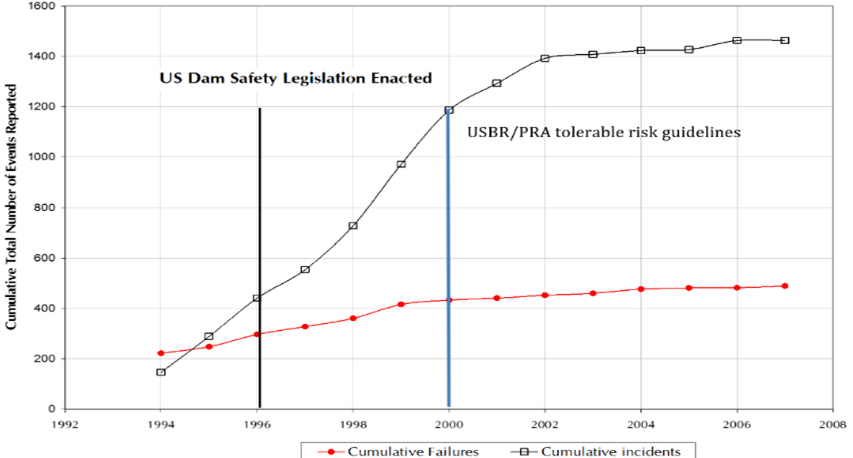
Figure 4: Effect of sound dam safety management practice on dam incidents
Given a dam owners responsibility for protecting the public from the effects of dam failure, maintenance of comprehensive dam safety management programs and up to date emergency plans have become a dam owner’s legal and moral responsibilities (Acharya and Wog 2010). In the context of dam safety assurance, the basic elements of dam safety management framework and regulation system should include:
1. Inventory of regulate dams
2. Proportioning mandates according to classification
3. Dam safety design standards and criteria
4. Requirements of operations, maintenance, surveillance
5. Emergency preparedness and response
6. Record keeping requirements
7. Education and training for capacity enhancement
8. Confirming legal status of Guidelines and standards
3.2 Recent Evolution from Standards-based Approach towards Risk Informed Approaches
Standards-based approaches are commonly used in dam safety industry to assess the safety of a dam and are what is normally required by regulators. Unfortunately, many dam failures occur as a result of an unusual combination of a chain of usual events that are not easily accounted for in a traditional standards-based assessment. As was reported by Regan, 2004 and others, risk-informed approaches used in combination with traditional standards-based assessments have proven to help owners better understand the complete range of dam safety vulnerabilities that may not be apparent using only deterministic methods. In this way, the hazards can be better identified and appropriate barriers put in place put in place to reduce the likelihood or the consequences of adverse events in accordance with the “Bow-tie” principle (CDA, 2007, 2013 revision). Simplified risk assessment tools such as “Failure Modes and Effects Analyses” (FMEA), “Event Trees”, Potential Failure Mode Analyses (PFMA) and Potential Failure Modes and Effects Analysis (Donnelly et. al. 2022) can be used to help identify events or combinations of events that were often previously not recognized or dismissed as being of little consequence allowing for better dam safety management and increased societal and professional confidence (Donnelly et al. (2018; 2019;). Lacasse (2019) noted the increasing need for “risk informed decisions” for the society and engineering standards. She highlighted the benefits of implementing reliability and risk concepts in dam engineering as a complement to conventional deterministic analysis. Morgenstern (2018) summarized the evolution of risk-based techniques and standards, its merits, limitations and recent trends. He noted that this approach has helped dam professionals in critically assessing the way dams could fail along with the relative likelihood of the different failure modes which ultimately serves to enhance the dam safety decision-making process. He concluded that decisions affecting public policy require the use of all available information and consideration of “feasibility, fairness, and affordability”. In this context, Nepal would also significantly benefit from the risk based and risk informed design, construction and operations of nation’s growing hydropower projects.
4 A DISCUSSION OF THE NEED FOR DAM SAFETY MANAGEMENT IN NEPAL
4.1 Dam Safety Management – A Canadian Perspective
The Canadian Dam Association developed dam safety guidelines in 1995 along with subse-quent revisions in 1999, 2007, and 2013 as well as supporting technical bulletins (2007; 2016; 2019)
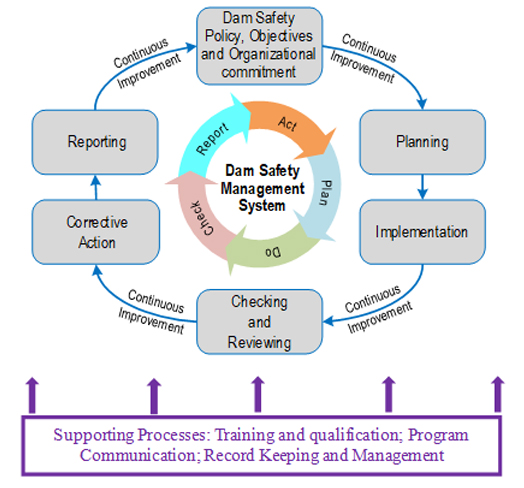
Figure 5 : Simple Schematic Showing the Elements of Dam Safety Management System (Adopted from CDA 2013)
designed to improve dam safety management practices in Canada. As with many other coun-tries around the world, dam safety practice in Canada begins with ensuring that the dam owner is fully responsible for the safety of the structure and that a well-structured dam safety management system is in place. Dam safety classification, based on the consequences that might occur on the event of a dam failure is a key component of and management system. This is used to develop the standard of care for each dam serving as a proxy for addressing the risk a dam poses. Throughout the life-cycle of a dam, a sound dam safety management systems involve fundamental elements of the “plan-do-check-act-report” cycle as explained in Figure 5 with clearly identified roles and responsibilities.
4.2 Dam Safety Management Status in Nepal
Currently, Nepal does not have a national dam safety regulation of dam safety requirements. Nepal also lacks integrated emergency management programs, even though the dam safety hazards that exist in Nepal are unique, and significant, compared to many other jurisdictions around the world. Instead, the management of dam safety risks is left to the discretion of the designer, owner, and operator of each individual dam with limited accountability for public safety and economic consequences of dam failure. Most of the major dams in Nepal are designed using the international standards or standards of consultant’s country of origin. As such, the hazards unique to Nepal are not always well accounted for (Donnelly et al., 2018) and designs and design standards can vary depending on the judgment and experience of the practitioner, the standards with which they are familiar with, and the risk tolerance of the owner of the facility.
4.3 Assessing Dam Safety Ricks in Nepal
4.3.1 The Need for Integrated Risk Assessment as Part of the Dam Safety Management System in Nepal
In many mountainous countries such as Nepal, Bhutan, India, China, Pakistan, and parts of Latin America, dams are exposed to a broad spectrum of natural hazards, increasing potential dam safety risks to the environment, the public and cultural heritage. Nepal is geographically situated in a location vulnerable to earthquakes, landslides, debris flows and flooding that increase the risk of a dam incident or failure (Sharma & Deng 2017). The first documented earthquake event, with a suspected magnitude of 7.8, dates back to 1255. Since then, M8 earthquakes have occurred every century, often in close proximity to each other following a period of quiescence. This is supported by Rajendran et al., 2018 who reported that a review of historical major earthquakes in the region indicates that there is increasing strain developing that portends at least one earthquake of magnitude 8.5 or more in the western part of Nepal in the relatively near future. While earthquakes can pre-condition mountainsides and glacial lake dams to destabilize, they are seldom the cause of a dam safety incident. In the steep Himalayan valleys, it is prolonged monsoon rains on pre-conditioned slopes that are augmented by cloudbursts that may increase in intensity and frequency due to climate change, that cause destructive landslides and debris flows (Reynolds et. al. 2018).
Therefore, it is critical that these natural hazards be considered in throughout the life cycle of a hydropower facility. The traditional approach of studying individual loading conditions in isolation (e.g. earthquake, hydrology, geotechnical, glacial hazards) is insufficient to ensure the resiliency of dams in mountainous regions. In Nepal dam safety management practices must consider the potential for natural hazards to act alone and in combination. Therefore, comprehensive integrated risk assessment is essential for resilient (safer) hydropower development (Reynolds et. al. 2018). This should include the proper monitoring of dangerous glaciers and landslide zones and adequate disaster risk reduction programs.
4.3.2 Sedimentation Considerations
The natural hazards that exist in Nepal affect the safety of dams and can yield a significant amount of sediment. Kaini and Annandale (2019) have identified sedimentation control and management as one of the mostoverlooked area in planning and design of hydropower pro-jects in Nepal. As shown in Figure 6, developing regions of the world (e.g. China, South America, Northern India and Nepal), that stand to benefit most from production of hydroelectricity, are often those that have the highest sediment yields (Grummer, 2009).
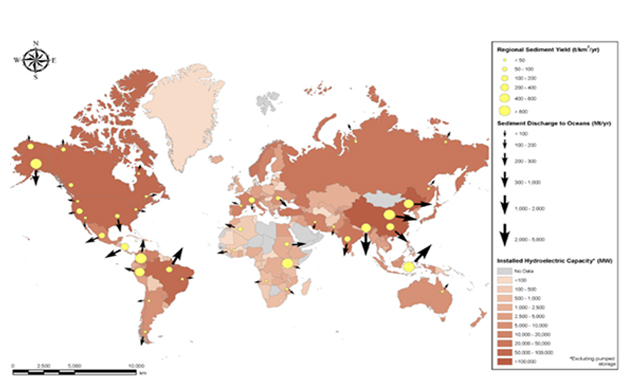
Figure 6: Comparison of hydroelectric potential and sediment production (Schelenberg et. al, 2017)
While no dam has ever failed as direct result of sedimentation issues, sedimentation can alter reservoir routing, complicate the management of seasonal flood inflows, reduce spillway discharge capacity, alter reservoir ice formation and increase loads on the dam and components of the dam such as gates (Schelenberg et. al, 2017).
4.3.3 Emergency Management Program – a Vital Strategy to Reduce Residual Dam Safety Risks
The impacts of Natural Hazards within a dam safety management program can be managed, as conceptually illustrated in Figure 7, if an effective emergency management program is in place, integrated into an owner’s business practices and shared with first responders within the communities (Bennett and Spektor 2013). A key component of any residual risk management strategy is an effective emergency management program to ensure that practicable measures are taken to minimize life safety hazards from reasonably foreseeable incidents (ICOLD 2017). A first step in defining the potential consequences and developing an emergency management plan is undertaking a hypothetical dam breach assessment in which flood wave routings are performed, inundation mapping developed, and potential impacts are assessed for a range of failure and flood scenarios. A wide range of methods may be applied in each of these steps depending on the purpose of the assessment (CDA 2013).
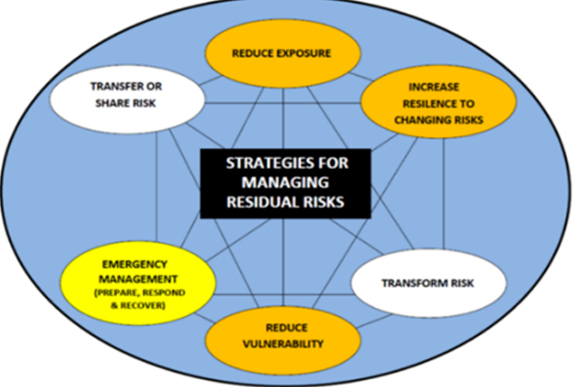
Figure 7: Strategies for Managing Residual Risks of Dam Incidents (CDA 2019) – Use new one
The emergency management program, including training and exercises, represents a low cost but very effective strategy to reduce the residual risks of dam incidents. As is illustrated in Figure 8, an effective emergency management program, an element of a robust dam safety management system, typically consists of four elements: (1) a Prevention and Mitigation Plan, (2) an Emergency Preparedness Plan (EPP), (3) an Emergency Response Plan (ERP) and/or Flood Action Plan (FAP) and (4) a Recovery Plan. This should be a vital part of Nepalese Dam Safety Management Program. Further details on this is discussed on Acharya et., al. 2020.
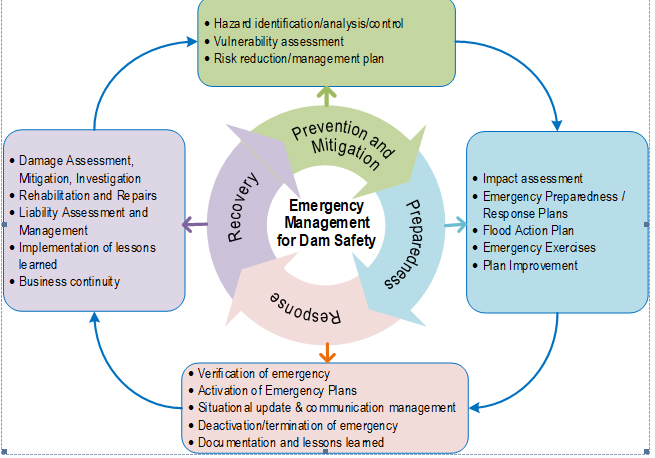 Figure 8: The key Elements of an Effective Emergency Management Program
Figure 8: The key Elements of an Effective Emergency Management Program
4.3.4 The Need for Transboundary Considerations
Over 150 countries and 2.8 billion people share 286 transboundary river basins globally. More than 126 of these river basins have dams located within them with some potential for cascade failure. In many parts of the world, the unique challenges that transboundary dams present are largely overlooked. For example, many rivers in the Himalayan region pass across multiple nations, some of them originate in Tibet, China, crosses Himalayan Mountains and flows towards other downstream countries. Given that, Nepal has over 6000 rivers and rivulets, and flow into the Ganges river system and offer vital functions for the downstream users in Nepal, India and Bangladesh. Furthermore, the hydroelectric developments in this region may have an influence that extends beyond its national borders. For example, the destruction of Upper Bhotekoshi Headworks and Powerhouse, in June 2016, had originated from a cloudburst in the Southern part of Tibet and North of Nepal (Basnyat et. at., 2020).
Typically, ensuring the safety of dams and downstream communities within the context of transboundary river basins requires a unique set of considerations that have often been not well accounted for (Acharya et. al. 2022). The number of planned dam projects, increasing uncertain climatic conditions, and changing patterns of human settlement, demonstrate that this will be an increasingly important issue in Nepal and other Himalayan countries. Transboundary good practices such as hydro-diplomacy, cooperation in good faith, regular exchange of data and information, conflict resolution mechanism, is more important than ever before for the mutual benefit, sovereign equality, territorial peace and integrity.
Recent dam incidents and failures throughout the world have underlined the significance of strong dam safety and emergency management practice, as well as the need to proactively incorporate measures learnt from these incidents. Unfortunately, in many parts of the world including Nepal, the unique challenges that transboundary dams present are largely overlooked (Acharya et. al. 2022). As such, integrated river basin planning that takes into account the management of water resources, sediment, and geohazards is critical for many mountainous nations. The Upper Arun hydropower project, for example, faces issues in managing the waterflow, sediment, and geohazards of the whole system from the headworks in Tibet to Nepal and then downstream through northern India into Bangladesh and eventually into the Bay of Bengal (Basnyat et. al., 2020).
Therefore, the implementation of modern dam safety management programs, specifically tailored to the needs of the transboundary dams located in the mountainous region, that include hydro diplomacy, regionally integrated hazard assessments, societal risk tolerance, risk-informed decision making, and improved risk communication, represents a practical vehicle to reduce the likelihood and consequence of dam safety incidents now and into the future in a naturally high hazard region like Nepal. Acharya et. al. 2022 go into further details on the issues surrounding Nepalese transboundary dams.
4.3.5 The Need for Improved Dam Safety Risk Communication
Bosewell at el. 2019 identified risk communication as a major gap in modern dam safety management practice. They noted that the recent high-profile dam failures have demonstrated the need for clearly communicating dam safety risks which can only be effectively achieved by a collaborative approach involving all stakeholders. While Morgenstern, 2018 recognized that communicating risks to inform public policy is a challenging task, to manage risk effectively, stakeholders must be included in risk management and decision-making processes during the planning, design, construction and subsequent operational phases of the project. This needs to include communication of the possible emergencies that could occur, and the mitigation strategies being employed (MAC 2016). Involving stakeholders early, and often, helps to establish and maintain the owners social license to operate the facility and gets ahead of potential misleading statements and perceptions that can be communicated through social media.
In Nepal, community engagement and appropriate public consultation sessions will become increasingly important to enhance public awareness of the potential risks, and benefits, of hydropower development. Developing these effective community engagement strategies needs to be performed in parallel with the development of Nepal’s national dam safety standards and regulations. This will include regular communication and collaborative emergency response plan exercises with national, sub-national and local government response agencies that will help to ensure all parties fully understand what resources may be available and the roles each needs to play to manage the dams and associated risks they pose. These actions will also assist decision-makers and incident commanders in keeping high-hazard dams in mind when considering response resource allocations. Bosewell, 2019 emphasized that it is time for dam engineers to rethink the societal and professional acceptability of the current way in which we think and talk about risks. He argues that the concept of “extreme consequences” needs to gradate towards “unbearable consequences”. While engineers cannot solve this alone, the dam safety community can invite and facilitate the needed conversation between engineering experts, corporate decision-makers, regulators and the public.
5. CONCLUSIONS
Nepal’s vast water resources has the potential to become one of the nations the most powerful economic engine, if it is safely developed and wisely utilized. While dams and reservoirs bring enormous economic and societal advantages, dam failure can pose risks the downstream population, the environment, and the cultural heritage. In a mountainous, seismically active region like Nepal, India, Bhutan, Pakistan, Indonesia, China and parts of the Latin America, the natural hazards that can initiate a dam failure are varied and significant. The current lack of a modern national dam safety management program increases the risks that hydropower projects pose to the environment, the public and the nation’s rich cultural heritage and dams and downstream communities. With the construction of new and larger dams to facilitate economic growth, the impacts of climate change, continued population growth and increased development downstream of dams, dam safety risks in Nepal can be expected to increase beyond its national borders. The developing and implementation of a modern national dam safety management framework tailored to specific needs of Nepal that includes hydro-diplomacy, integrated hazard assessments, risk informed decision making and improved risk communication represents an effective and essential vehicle to help minimize the likelihood and consequence of dam safety incidents now and into the future.
A robust dam safety program specifically tailored to the needs of the transboundary dams, including hydro-diplomacy, will increase public awareness and safety and would strengthen societal and professional confidence that the inherent risks of these large, engineered structures are appropriately addressed and managed during all phases of their life cycle. Implementation of modern dam safety management framework helps to create the future where all dams are safe, well-managed and benefits the society in an equitable manner. This will, ultimately, help to create an attractive investment climate in Nepal for national and international investors on major hydropower development project in a safe and sustainable manner.
6. RECOMMENDATIONS
Nepal would significantly benefit from:
Professional engineering organizations, academia and energy focused media (e.g. Urjakha-bar) also need to take a lead role in connecting the Nepalese engineering community to the national and international dam safety industry in order to introduce international best practices dam safety management, risk-informed prioritization of dam safety risks using tools such as the recently developed potential failure modes and effects (PFMEA) methodology ) at the design stage and throughout the life-cycle of a hydroelectric facility, and the establishment of independent review boards for major hydropower projects.
7. REFERENCES
Acharya, M., Donnelly, C.R., Zielinski P.A., 2022. Evolution of Dam safety Management Practice for Transboundary Dams – A Global Perspective with a Nepalese context. 27th International Congress on Large Dams, May 27-June 3rd Marseille - France.
Acharya M. and Donnelley R 2021. The Need Dam Safety Management Program in Nepal. ICOLD-CIGB 2021 Symposium: Sustainable Development of Dams and River Basins. International Commission of Large Dams (ICOLD) Symposium 2021, New Delhi, India (paper presented).
Acharya M., Donnalley R.; Groeneveld J., Rutherford J., Bennet T., McAllister A., 2020. A White Paper on – The Importance of Emergency Management Program for Nepalese Dams and Hydro Projects – Canadian Perspective and Nepalese context. The International Journal of Hydropower and Dams. Volume 27, Issue 3, 2020.
Acharya, M. & Wog, K. 2010. Dam Safety Practice in Alberta for Department Owned Water Management Dams. Proc. CDA 2010 Annual Conferences, Niagara Falls, ON, Canada.
Alberta Dam and Canal Safety Directive 2018 (AEP 2018). ISBN 978-1-4601-4157-1
Basnyat, D.B., Ray, P., Reynold J., Immerzeel, W., & Harsdeep N.R,. 2020. Addressing Misconceptions about Climate Change in the Himalayas. The International Journal of Hydropower and Dams. Volume 27, Issue 3, 2020.
Bennett T., and Spektor T., 2019. Examining Dam Safety Guidelines for Emergency Management in the Context of Industry Standards and Practices. Proc. CDA 2013 Annual Conferences, Montreal, QC, Can-ada.
Bhatta, R. P. 2017. Hydropower Development in Nepal - Climate Change, Impacts and Implications. Re-newable Hydropower Technologies: 75-98.
Bosewell J., Cavanagh P., Staples L., Lefsrud L., Rentz A., 2019. Preliminary Work by DIAC towards Thinking Clearly and Communicating Effectively about Risks. Proc. CDA 2019 Annual Conferences, Calgary, AB, Canada.
Canadian Dam Association (CDA). 2013. Dam Safety Guidelines, Canadian Dam Association, Edmonton, AB.
Canadian Dam Association (CDA). 2019. Technical Bulletin: Emergency Management for Dam Safety, Canada.
Dick W., Woodbine R., Abrahamson B., & Acharya M., 2019. PMP and PMF Estimates in Alberta n Saskatchewan: Initial Review. CDA 2019 Annual Conferences, Calgary, AB, Canada.
Donnelly C.R. Acharya M., James Rutherford, Joe Groeneveld, Colleen Woods, Pouya Zangeneh, & Javid Iqbal, 2022. Alberta Environment and Parks PFMEA Tool for Risk-Informed Dam Safety Prioritization. Canadian Dam Association Bulletin, spring 2022, Vol 33, No 2.
Donnelly, C.R., 2015, General Report, Question 97 – Spillways, ICOLD, . Proc. ICOLD Congress & Annual Meeting, ICOLD Norway
Donnelly, C.R., Acharya, M & Groeneveld, J. 2019. Semi-quantitative Risk Assessment to Enhance Dams Safety Decision Making. Proc. CDA 2019 Annual Conferences, Calgary, AB, Canada.
Donnelly, C.R. & Acharya, M. 2019. Quantative Risk Informed Dam Safety Decision Making. International Conference on Dam Safety Management and Engineering. MYCOLD, Penang, Malaysia November 19-21.
Donnelly, C.R., Rutherford, J.H., Cadou, C., Moler, W., Taylor, S. & Karki, P. 2018. Lessons Learned from Five Hydroelectric Power Projects in Nepal in the Aftermath of the 2015 Gorkha Earthquake. Proc. 26th ICOLD Congress & 86th Annual Meeting, ICOLD - Question 101, Vienna, June 2018.
Foster, Mark, Robin Fell, and Matt Spannagle. The statistics of embankment dam failures and accidents. Canadian. Geotechnical Journal, 37: 1000–1024 (2000).
Grummer, J., Combating Silt Erosion in Hydraulic Turbines, HRW-Hydro Review Worldwide, Volume 17, No. 1, March 2009
ICOLD (2017). Dam Safety Management: Operational Phase of the Dam Life Cycle. International Com-mission on Large Dams (ICOLD), Bulletin 154, Paris.
ICOLD. 1995. Dam failures statistical analysis. International Commission on Large Dams (ICOLD), Bulletin 99, Paris.
Jensen R.B. 1980. Dam and Public Safety. Water and Power Resources Services. Superdiendent of Doc-uments, US Government Printing Office, Washington, DC.
Lacasse-Hoeg, S. (2019). 'Reliability and Risk approach for Design and Safety Evaluation of Dams', Keynote address on ICOLD-CIGB 2019 Symposium: Sustainable and Safe Dams around the World, June 9-14 Ottawa, Canada.
MAC (Mining Association of Canada). 2016. “Crisis Management and Communications Planning Reference Guide 2016.” Internet accessed May, 2019. https://mining.ca/sites/default/files/documents/Crisis-Management-and-Communications-Planning-Reference-Guide-2016_0.pdf
Morgenstern, N.R. 2018. Geotechnical Risks, Regulation, and Public Policy. Invited Lecture, Soils and Rocks, Sao Paulo, 41(2): 107-129 May-August, 2018. (DOI:10.28927/SR.412107MAC (Mining As-sociation of Canada). 2016. “Crisis Management and Communications Planning Reference Guide 2016.” Internet accessed May, 2019. https://mining.ca/sites/default/files/documents/Crisis-Management-and-Communications-Planning-Reference-Guide-2016_0.pdf
Ouranous 2015. Probable Maximum Floods and Dam Safety in the 21st Century Climate. Report submitted to Climate Change Impacts and Adaptation Division, Natural Resources Canada, 39 p.
Kaini, P. and Annandale G. 2019. Hydro Review: The way forward for Nepal’s Hydropower Development. https://www.hydroworld.com/articles/2019/01/hydro-review-the-way-forward-for-nepal-s-hydropower-development.html
Rajendran, C.P., Sanwal, J., John, B., Anandasabari, K., Rajendran, K., Kumar, P., Jaiswal, M. & Chopra, S. 2018. Footprints of an elusive mid‐14th century earthquake in the central Himalaya: Consilience of evidence from Nepal and India. Geological Journal: 1-18.
Reynolds, J.M., Donnelly, C.R., Rutherford, J.H., Taylor S., Karki, P. & Sulpya, R.M. 2018. Accounting for Natural Disasters in Dam Design and Dam Safety. Proc. Annual Conferences CDA, Quebec City, Canada, 2018.
Schellenberg, Greg., C. Richard Donnelly, Charles Holder and Rajib Ahsan. 2017. Dealing with Sediment. Effects on Dams and Hydropower Generation. Hydro review Worldwide. January - February, 2017.
The Writer is one of the senior dam safety engineer represent from local province the government of canada, This article taken from Urja Khabar bi-annual Journal published in 2022 Dec. 16th
Conversation
- Info. Dept. Reg. No. : 254/073/74
- Telephone : +977-1-5321303
- Email : [email protected]














